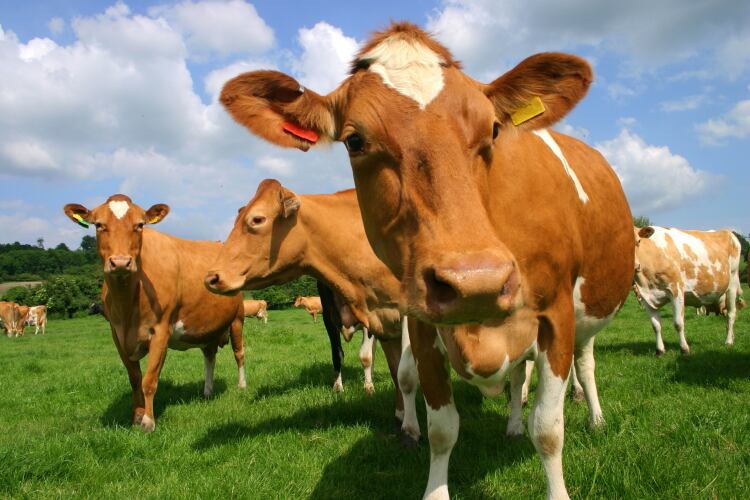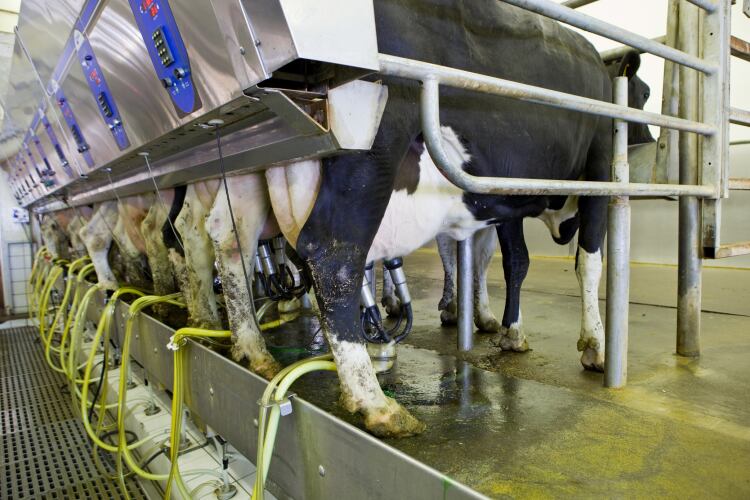As milk production volumes recorded a five-year low in July, prices of dairy products have been among the biggest contributors to Britain’s double-digit food inflation rate.
Food inflation has reached 12.8% year on year - the highest value on record since August 2008 – fuelling a higher-than expected overall consumer price index (CPI) of 10.1%, the Office for National Statistics (ONS) revealed.
Dairy foods have been particularly affected by inflation due to a mix of rocketing production costs, stable demand, and a long spell of hot weather.
According to detailed data published by the ONS, low-fat (34%) and whole milk (28.1%) saw the steepest annual price increase, followed closely by butter (27.1%), cheese (17.9%), yogurt (14.2%) and ice cream (12.9%); other products including soy milk hit 10%.
Kien Tan, director of retail strategy at PwC, commented: “By far the biggest contribution to today’s record 10.1% CPI figure came from food prices, with the monthly increase of over 2% between June and July the highest seen in 20 years, and exceeding last month’s already heightened rate of growth.
“Supermarkets have had little choice but to pass on price increases from suppliers, themselves contending with unprecedented inflation in raw material and ingredient input costs. This has been particularly acute in labor and utility intensive categories like dairy, with reports of the price of a pint of milk having more than doubled in some stores since the start of the year.”
Other food products with soaring prices were flour (29.7%), pasta (24.4%), olive oil (23.6%) and margarine (22.5%).
Dairy inflation at a glance (year-on-year change to July 2022, %)
Low fat milk: 34.0
Whole milk: 28.1
Butter: 27.1
Milk, cheese and eggs: 19.4
Cheese and curd: 17.9
Yoghurt: 14.2
Edible ices and ice cream: 12.9
Other milk products (including soya milk): 10.0
The bigger picture
Milk price is on the rise, but producers are barely keeping pace with increasingly unpredictable input costs, the Agriculture and Horticulture Development Board (AHBD) recently said in its monthly dairy outlook market release.
The body recorded a five-year milk production low in July, and daily deliveries are expected to fall between 1% and 3.8% for the 2022/23 season. The exact number would depend on what cost pressures producers will have to address over what is expected to be a harsh winter for all.
“We have seen nearly a year of significant inflation in input costs, exacerbated by the continued conflict in Ukraine,” explained Katherine Jack, senior analyst, dairy for the AHDB. “Although milk prices have increased substantially, they are still only keeping pace with increases at best. As the year progresses, we’ll see expenses seasonally increase on one hand, and potentially see reduced demand limiting price rises on the other.”
In a bid to better inform its milk production forecast, the body drew up four scenarios. A low impact scenario predicts yields to go down by 0.5% from the current year trends due to ‘further pressure on cash flows from higher purchased feed volumes and higher prices.’ But a ‘very high impact’ scenario predicts a 2% drop in yields, or 468m liters.
Through retail, milk volumes are expected to be down 7% year-on-year for 2022; with yogurt (-8%), cheese (-5%) and butter (-8%) volumes also in decline.



